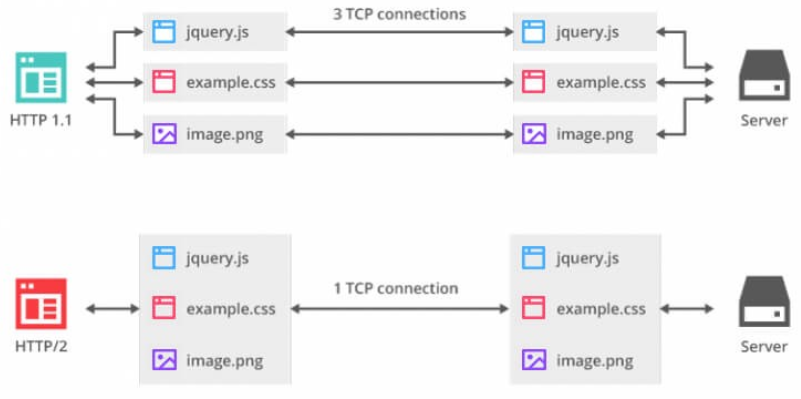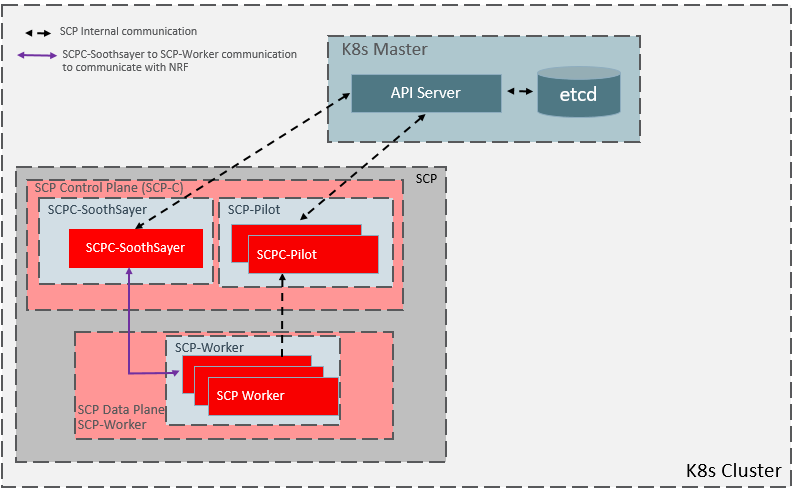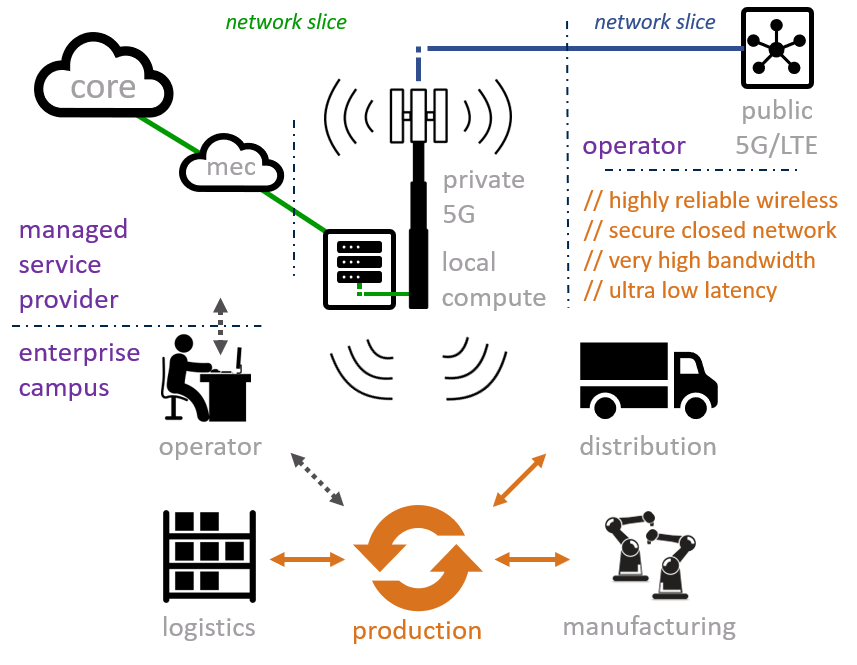
A new 5G system architecture and protocol stack has been built to realize all the new 5G telecommunications features. This is 5G Mediation HTTP/2. The new 5G technology uses HTTP/2 as an application layer protocol. This implies that all network entities in a control plane communicate using HTTP/2.
In this article, we will discuss HTTP/2, its use in 5G core networks, as well as potential vulnerabilities and security issues. We provide an overview of 5G telecom architecture based on 3GPP (3rd Generation Partnership Project) technological standards. Then we describe the new features of HTTP/2 protocol, along with assessing 5G core network security issues that may arise in the 5G core network as well as 5G Mediation Solutions.
Contents
What is 5G mediation?
5G is rapidly approaching reality, with broad installations expected in the near future.
5G telecom will offer speeds up to 1000 times faster than 4G, as well as significantly lower latency and the ability to support large numbers of devices connecting to the network at the same time, allowing the Internet of Things(IoT) to reach its full potential. 5G network mediation systems will be significantly different from their predecessors in various aspects and will be anchored by a number of critical technologies in order to achieve these lofty aims.
The 3GPP specifications for 5G network mediation differ from prior iterations in a variety of aspects:
- The Convergent Charging System combines the 4G Online Charging System (OCS) and Offline Charging System (OFCS) into a single logical entity (CCS).
- The Online Charging Function (OCF) and the Charging Data Function (CDF) have combined their offline CDR generation and online charging event management capabilities into a single entity called the Charging Function (CHF).
- A Service-Based Interface for 5G telecommunications is used for applying the Charging Trigger Function (CTF) and the Charging Function (CHF). This is based on HTTP2
What is HTTP/2? And how is 5G mediation dependent on it?
HTTP (Hypertext Transfer Protocol) is the most widely used web protocol today. When you first accessed this page, your browser sent an HTTP request to a web server, which returned the content you’re reading now. HTTP/1.1 has remained unchanged throughout time, resulting in numerous difficulties with speed, security, and user-friendliness.
HTTP/2 is the second version of the HTTP protocol, which aims to make applications faster, easier, and more reliable by addressing many of the shortcomings in the first version.
Our apps will be faster, simpler, and more robust thanks to HTTP/2, a rare combination.
Many advanced features are included in the upcoming 5G network for mobile and 5G core network security. Control and User Plane Separation (CUPS), Network Slicing (NS), Service Based Architecture (SBA), and Access Agnostic are all elements of 5G’s core network. A new 5G system architecture and protocol stack has been built to realize all-new features.
3GPP employed the latest and best web technologies to redefine core network architecture fundamentally when defining the 5G core network (5GC). The usage of HTTP/2 for signalling between functions is one small component of this.
How does 5G HTTP 2 mediation work?
A number of critical technologies support 5G Network Mediation systems.
Virtualization: In order to provide auto-scaling and fault tolerance, 5G network mediation systems will run in virtualized cloud environments, following NFV (Network Functions Virtualization) principles and standards.
Network Slicing: With 5G, network operators will be able to dedicate portions of their networks to specific client use cases such as mobile broadband, smart energy grid, linked vehicles, and smart cities. Each use case is given its own set of optimal resources and network topology, with SLA-specified features like connectivity, speed, and capacity that are tailored to the use case’s requirements. Unlike 4G, where all the services and use cases share the same infrastructure, network slicing permits the development of several virtual networks on top of a common physical infrastructure.
Microservices: In order to achieve ultra-low latency and self-healing requirements of 5G systems, traditionally centralized network and charging components will be distributed closer to the network edge. Multiple smaller, simplified components specialized for carrying out specific duties where they are necessary will replace a small number of huge central monolithic application instances. Network Mediation solutions must be linked with new 5G technology and enable the same operating modes in order to monetize 5G networks efficiently.
Benefits of 5G HTTP/2 mediation solutions
5G telecom is proving to be a superior communication network, with enhanced speed, coverage, and reliability. The following are the benefits of 5G HTTP/2 Mediation Solutions:
Vendor-Independent: Any vendor’s network equipment and OSS/BSS systems are supported. HTTP 5G Mediation Solutions’ standards-based interfaces, and the ability to build proprietary protocols and message formats allow it to communicate with nearly any sort of equipment or system.
Preserving BSS Investments: The usage of a 5G network Mediation Solution to handle the translation from JSON/ HTTP2 to Diameter would be a faster and more cost-effective option, allowing the existing online charging system and interfaces to remain in place.
Shield Systems for Charging 5G Volumes: Many of these transactions will be zeroed or included in subscription bundles, they will not need to be processed through the online charging system.
Scalability: 5G HTTP Network Mediation Solutions; proved scalability in production deployments handling billions of transactions per day. Use cases like IoT will result in a significant increase in the number of transactions to be collected and managed in security for 5G, it’s vital to have a proven and scalable mediation solution.
Cloud-Ready and NFV: The HTTP 5G Mediation Network Solutions are NFV and cloud-ready and have been tested in production in virtual environments on client premises and private cloud and public cloud environments like AWS.
Network Slicing and Microservices: 5G HTTP Network Mediation Solutions can be deployed as a central mediation function that span all 5G network slices or as many instances in each slice. The web-based user interface allows you to monitor, control, and configure numerous distributed instances from a single pane of glass.
Evolution At 5G Speed: The 5G HTTP Mediation Network Solutions give service providers the freedom to create and change their mediation business processing and logic as needs change.
What can be the disadvantages of 5G HTTP/2 mediation?
Although there is now no alternative to HTTP/2 that is superior, it may present some challenges in mediation in the newly planned Service-based Architecture (SBA):
- The application server receives short bursts of a large number of requests with multiplexing, which could overwhelm the server if not throttled at the load balancer.
- Backward compatibility with HTTP/1 must be maintained in HTTP/2. Most experts expected the HTTP/2 protocol to offer a slew of new features. However, they were left out of the final version.
- HTTP/2 software is not as mature as HTTP/1.1 software and can contain bugs in its implementation.
- This could obstruct 5G network connectivity, which is already limited because frequency waves can only travel a short distance, putting additional strain on the gadget and its battery.
- HTTP/2 developers left encryption unchanged from HTTP/1.1. This means that website owners may still opt for a lower level of protection, putting 5G security at danger.

HTTP/2 Connection
As with any new technology, some initial flaws will be ironed out as the system matures. The 5G business will continue dominating the communication business because of its improved speed and dependability.
STL’s stake in 5G HTTP 2 mediation solutions
New Radio solutions will be required to hasten the cheap implementation of increased broadband connections, low latency communications, and IoT devices as operators around the world rush 5G network deployment. STL has extensive experience integrating Open RAN standard-based applications. As a result, STL formed a one-of-a-kind partnership with Saankhya Labs, VVDN, and the Open RAN ecosystem for their respective specialty areas.
STL’s ecosystem is made up of experts and a fresh approach to 5G Radio Units which will enable global operators to accelerate large-scale 4G and 5G deployments confidently. STL’s HTTP 5G Network Mediation Solution enables service providers to take advantage of the 5G opportunity while minimizing risk and disruption to existing systems.
STL’s Mediation Solutions integrate offline and online mediation functionality into a single platform, managing the complexities of all network and BSS interfaces. With these technologies, operators around the world will be able to meet a variety of deployment use cases with a shorter time to market.
FAQs:
- Is HTTP 2 the same as HTTPS?
- Why is HTTP2 used in 5G?
- Is HTTP 2 secure?
- What does 5G mediation mean?
HTTPS encrypts data and protects it from intermediary acts by securing the connection between a visitor’s browser and the webserver.
This is because data received via HTTPS is encrypted using the Transport Layer Security protocol (TLS). Therefore, the first major improvement to HTTP since 1999 is HTTP/2.
Multiplexing is possible with HTTP/2 (requesting multiple files at the same time). This enhances site performance, speed, and server efficiency greatly.
The most significant distinction between HTTP 1.1 and HTTP/2 is that HTTP/2 significantly improves page load times, particularly over slower connections (i.e., mobile networks). Faster pages result in happy visitors, who convert at a higher rate.
Many advanced features are included in the upcoming core 5G network. Service Based Architecture (SBA), Control and User Plane Separation (CUPS), Network Slicing (NS), and Access Agnostic are all elements of the core network in 5G. A new 5G system architecture and protocol stack has been built to realize all-new features.
HTTP/2 requires a “layer” in 5G. The 5G business will combine HTTP/2 API method calls with various network functions, introducing a service-based architecture. This must be considered as part of the new 5G rollout.
HTTP/2 increases browser users’ overall security. More specifically, HTTP/2 is defined for both HTTP (non-encrypted) and HTTPS (encrypted) URIs (over TLS encrypted channels).
Despite the fact that the protocol does not require encryption, all major browser implementations (including Firefox, Chrome, Safari, Opera, Internet Explorer, and Edge) have elected to support HTTP/2 over TLS exclusively.
In fact, browsers treat clear-text HTTP/2 and HTTP/2 over encrypted TLS as two separate protocols. HTTP/2 is divided into two types: encrypted H2 and clear-text H2C. Because none of the major browsers support H2C, TLS encryption is required for a website to take advantage of HTTP/2’s other benefits.
The main benefits of 5G telecom, such as faster transmissions, increased remote execution capacity, the ability to implement virtual networks (network slicing), and providing more tailored connectivity to specific needs, are only possible if it has a protocol that aims to make applications faster, easier, and more reliable. HTTP/2 is the second version of the HTTP protocol, which addresses the flaws in the original. To implement all of the additional functionalities, a new 5G system architecture and protocol stack has been created.





















